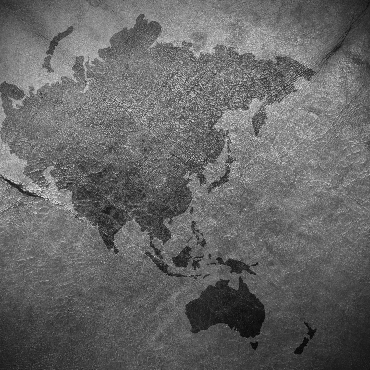PYONGYANG DEPLOYS TO RUSSIA'S FRONTLINES
North Korea has deepened its military involvement in Russia's war on Ukraine with clear intentions: to bolster the Russian military's tactical proficiency and warfighting capabilities. Pyongyang is already supplying nearly 40% of the artillery munitions used by Moscow in the conflict, but has gone further and taken the initiative to deploy thousands of troops to the front lines in support of Russian forces. Ukrainian intelligence reports that last year's 12,000-strong contingent sent to the battlefield in Russia's Kursk region has grown to roughly 18,000 personnel, including combat troops, engineers, and logistics units. In return, Kim Jong-un's regime is receiving new weapons from Russia. Perhaps more critically, though, the DPRK is gaining modern warfighting experience. No other militaries in the East Pacific have participated in a high-intensity conventional conflict of this scale in decades.
Seoul's public response to all this, however, has been muted. While South Korea has been quick to condemn Pyongyang's missile tests in the Pacific, its government said nothing when a North Korean short-range missile struck a residential building in Kyiv this May, killing a dozen civilians. However, the implications for South Korea are stark. The return of combat-hardened veterans to neighboring North Korea will add a new dimension to its conventional warfighting capabilities, thereby altering the playing field in any future East Asian conflict. (The Guardian, July 24, 2025)
PACIFIC POWER SHIFTS TOWARD BEIJING
China continues to reconfigure the security landscape of the East Pacific by deepening its military ties with Russia and North Korea. This year, Moscow has deployed submarines and conducted aerial and naval exercises in the region, while North Korea has continued to advance its missile programs and intelligence, surveillance, and reconnaissance (ISR) capabilities. These developments have alarmed Japan, prompting its Ministry of Defense to publish a recent white paper laying out Japan's defense priorities from 2025. The report emphasizes the need to build up Japan's own self-defense capabilities, strengthen its alliance with the United States, and bolster ties with like-minded nations. For its part, China's Foreign Ministry has dismissed Tokyo's concerns of Chinese military expansion, claiming that the white paper "adopts a wrongful perception of China" and that Beijing has been "legitimate and reasonable" in its military affairs. (Defense News, July 16, 2025; U.S. Naval Institute, July 15, 2025)
CHINESE SHIPS COLLIDE IN SCARBOROUGH SHOAL
Pursuing a Filipino ship in contested waters has resulted in an inadvertent collision of vessels between China's navy and its coast guard. The incident occurred during the Philippine Kadiwa Operation, an economic initiative to promote fishing throughout the West Philippine Sea as part of a special economic zone. Though falling within the Philippines' economic zone, the Scarborough Shoal area is territorially claimed by China as part of the Zhongsha Islands. No casualties or hostilities were reported in the incident, and Chinese state media stated it was handled "professionally and in accordance with the law," while also claiming the encounter was a "necessary measure to safeguard sovereignty" and accusing Manila of "illegally" entering the shoal's waters. (South China Morning Post, August 11, 2025)
TOKYO DIVERSIFIES ITS DEFENSE PORTFOLIO
In a move that cements a new era of Japan-Australia defense cooperation, Tokyo has secured a $6.5 billion contract with Canberra to build 11 upgraded Mogami-class frigates—the country's largest-ever weapons export since lifting its post-World War II arms ban. Canberra chose the Japanese design over Germany's MEKO A 200, citing stealth, crew efficiency, and interoperability with U.S. systems among key advantages. The deal signifies a notable deepening of economic ties and defense cooperation between Japan and Australia, and reinforces the greater security architecture of The Quad. It also establishes Japan as an emerging stakeholder in the logistical aspects of the defense industry, reflecting Japan's gradual departure from its legacy of pacifistic diplomacy. (The Diplomat, August 12, 2025)
SOUTH KOREA'S POPULATION PROBLEM
South Korea's armed forces are shrinking as its population crisis worsens. Currently with the lowest birthrate in the world, South Korea has been dealing with a declining birth rate for years, but this ongoing demographic issue now has deeper implications for the country's national security. The number of active-duty South Korean military personnel has dropped by roughly 20% since 2019, despite the fact that most males must meet a minimum service requirement as part of South Korea's national conscription. This contraction in manpower comes while Seoul maintains one of the world's most capable and well-funded militaries, with a defense budget exceeding $40 billion — larger than the entire economy of North Korea. Yet sustaining readiness with fewer troops is forcing new approaches, such as heavier reliance on advanced technologies, expanded recruitment of women, and potential adjustments to service requirements. However, with census projections predicting even sharper declines in the decades ahead, Seoul will need to formulate new strategies in order to maintain operational military capabilities. (Newsweek, August 11, 2025)
Want these sent to your inbox?
Subscribe
Indo-Pacific Monitor No. 47
Related Categories:
Intelligence and Counterintelligence; International Economics and Trade; Military Innovation; Warfare; Resource Security; China; Russia; South Korea; Ukraine

